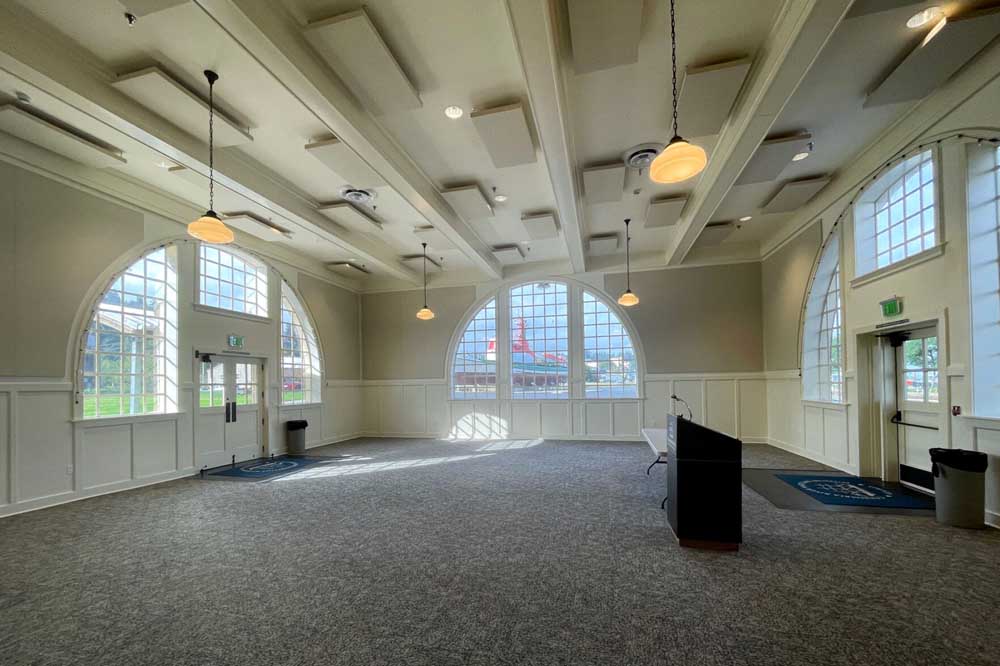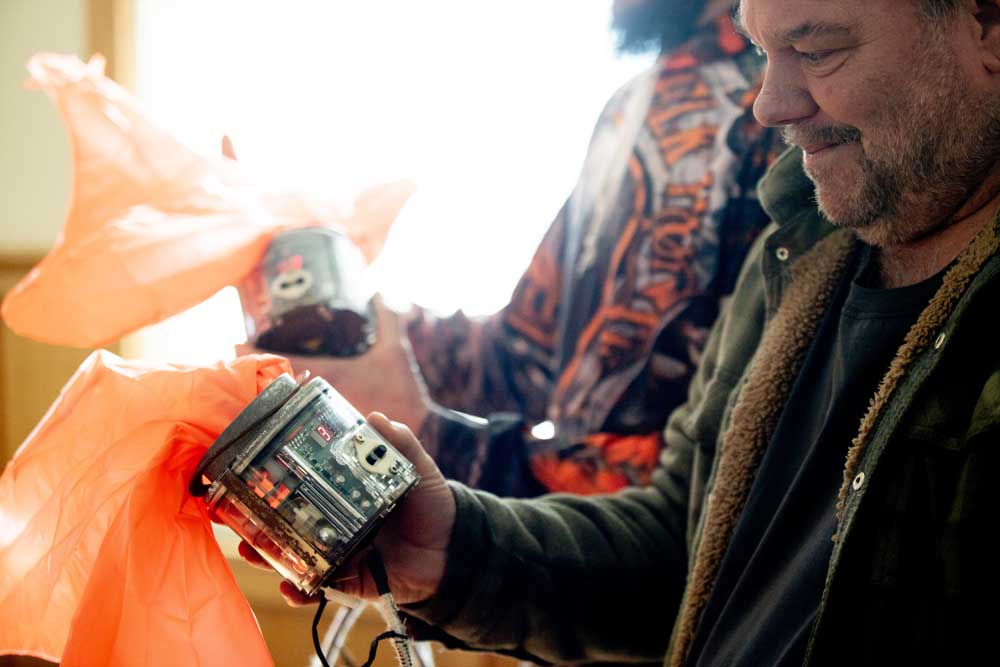Astoria Train Depot: A prime architectural artifact
Published 1:00 pm Friday, November 1, 2024

- The present-day interior of the Barbey Maritime Center, which received new flooring, heating and rain-proofing with the assistance of students from the Clatsop Community College Historic Preservation Program.
At one time, 118 miles of railroad line ran along the Columbia River and Clatsop County, connecting Portland’s Union Station to Seaside.
Trending
Train stations dotted the river and coast.
For a large portion of the 19th century, the town of Goble was the terminus of the line from Portland, until lumberman Andrew B. Hammond accepted a contract in the 1890s to connect the 50 miles between Goble and Astoria.
This route became known as the Astoria and Columbia River Railroad.
Trending
A few years later, Astoria’s connection to Warrenton and Seaside via the Astoria and South Coast Railway opened up the journey from Portland to the coast.
Around this time, a wood train depot was constructed near 20th and Commercial streets along the Astoria riverfront. Few images remain of the original depot, which was eventually replaced by a brick structure that still stands.
The surviving depot was built in 1925 by the Spokane, Portland and Seattle Railway, which replaced the Astoria and Columbia River Railroad in 1907 after railroad magnate James J. Hill purchased the line.
The building was designed by Thomas D. McMahon, a Great Northern railway architect who was already well-known for designing the Many Glacier Hotel in Glacier National Park.
It is one of the few Pacific Northwest examples of the Prairie School movement, a wave of late 19th and early 20th-century architecture which was inspired by expansive prairie landscapes.
When complete, the Astoria Train Depot totaled 6,000 square feet with two wings. The west wing was for passenger service, where men and women had separate waiting rooms divided by a ticket office on either side of the building.
The east wing was used for baggage and freight, particularly the salmon and logs that were a staple of the Columbia River economy. At one time, the depot serviced up to eight passenger trains a day from Portland.
Although there was rapid expansion with the construction of facilities at Tongue Point in the 1940s, after World War II many positions were cut and trucking began to shave away at the railroad business.
By 1952, passenger service was discontinued and the depot was only used for freight. Burlington Northern absorbed the smaller lines that had operated along the Columbia River in a 1970 merger.
Eventually, the company donated the now-defunct Astoria Train Depot to the Columbia River Maritime Museum, around the museum’s 25th anniversary in 1987.
The space was quickly put to use as a boat shop, where volunteers and staff gathered to create a replica of the historic sailing gillnetter that is currently on display in the Brix Maritime Hall.
However, little had been done to the depot since it was originally built. The Nisqually earthquake in 2001 caused considerable structural damage, and it was primarily a storage space other than the excursion trains that ran for the Lewis and Clark Bicentennial between 2002 and 2005.
In 2010, museum staff decided to reinvest in the Astoria Train Depot and bring it back to its former glory. In a nearly three-year renovation, the train depot received new flooring, heating and insulation, lighting, and rain-proofing with the assistance of students from the Clatsop Community College Historic Preservation Program.
It reopened to the public in 2013, christened “The Barbey Maritime Center for Research and Industry” in honor of the Barbey family, pioneers in the Columbia River salmon packing industry. It remains dedicated to the presentation of traditional maritime skills and trades.
Today, the Barbey Maritime Center hosts events, like a November Day of the Dead celebration organized by El Centro NW, and monthly hands-on workshops, including woodworking, fly tying, watercolor painting and maritime mat weaving.









